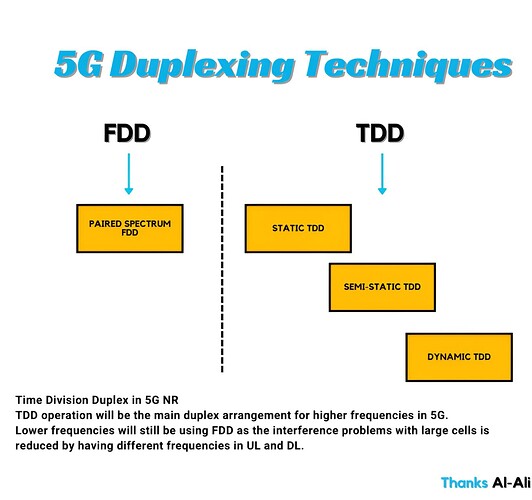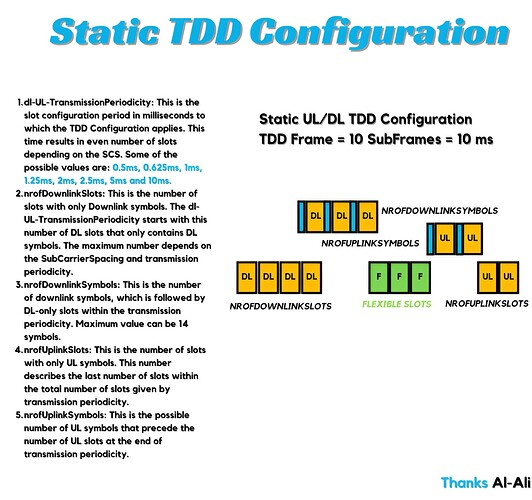In 5G, TDD is primarily used for higher frequency bands, while Frequency Division Duplex remains suited for lower frequencies. This is because FDD uses separate frequencies for UL and DL, reducing interference issues in large cells, whereas TDD shares the same frequency for both UL and DL but at different times.
- Interference Issues in TDD:
In TDD, UL and DL transmissions happen at different times but on the same frequency, which can cause interference if not properly managed:
- Base Station-to-Base Station Interference:
A weak UL signal from a user device (UE) can be disturbed by a strong DL signal from a nearby base station. This happens because the base stations are transmitting and receiving on the same frequency, just at different times. - Device-to-Device Interference:
Two nearby devices can interfere with each other when one device is receiving a weak DL signal from the base station, while the other device transmits a strong UL signal to a different base station. This interference is more pronounced in larger cells due to the increased power of both base stations and devices.
Solution:
TDD is more suitable for smaller cells, such as indoor environments, where interference is naturally reduced due to lower power levels.
- Advantages of TDD in High-Frequency Bands:
TDD offers flexibility in UL/DL capacity allocation. Since UL and DL transmissions use the same frequency but at different times, the network can allocate more time for DL or UL as needed, depending on traffic patterns in the cell. This flexibility is not possible with FDD, where UL and DL frequencies are fixed.
For instance, in a cell where there’s more DL demand (like streaming video), TDD can allocate more time for DL transmissions. In contrast, FDD cannot adjust its UL/DL capacity as it uses separate, static frequencies for both.
- Guard Periods in TDD:
In TDD, there needs to be a guard period (GP) between UL and DL transmissions to prevent overlap and ensure smooth transitions. The guard period ensures that UL and DL transmissions don’t interfere with each other at the base station. This is particularly important in larger cells, where signal timing varies due to the distance between the base station and the device.
- Dynamic TDD
Dynamic TDD allows the UL and DL time slots to be scheduled on-the-fly to adapt to real-time traffic demands. In this system, there is no fixed UL/DL allocation. However, dynamic TDD requires careful coordination to avoid interference between cells, especially in dense deployments.
- Dynamic TDD mechanism works as Follows:
- Downlink control signaling (DCI) informs the devices when to transmit in UL or receive in DL.
- If a device is scheduled to transmit, it sends data in the UL direction. Otherwise, it listens for DL transmissions.
- The scheduler dynamically manages the UL/DL allocations based on the traffic demand, ensuring efficient resource usage.
That’s it ![]()
LinkedIn: ![]()

